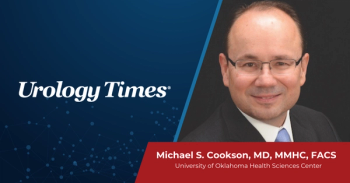
Global prescribing patterns of opioids after robotic prostatectomy
In a recent study published in Urology, a team of investigators compared opioid prescribing patterns among urologists around the world.
Although the opioid epidemic is still on the rise in North America, it is much less prevalent throughout the rest of the world. This trend has not been studied in association with urologic procedures until now.
In a recent Urology study,1 Emily C. Hacker, BS, and a team of investigators compared opioid prescribing patterns among urologists around the world. Using data collected from a web-based survey, they analyzed trends in a population of clinicians who had performed robotic-assisted laparoscopic prostatectomy (RALP). Hacker is a 4th year medical student at the University of Pittsburgh School of Medicine, Pittsburgh, Pennsylvania.
Please discuss the background for the study.
The impetus for this study was surrounding the fact that excessive opioid prescribing in the United States after surgery remains commonplace, even as the US is struggling with the worst opioid overdose death rate in its history. There are over 90,000 deaths from all drug overdoses combined in the past year alone, and this number represents an overall 30% increase in the past 12 months from previous years. However, the same is not necessarily true in other countries, where overdose rates from opioids are extremely low or nonexistent.
In the surgery world, a recent study from the general surgery literature reported that in the United States, up to 91% of patients receive post-discharge opioids after common procedures. And this is compared to only 5% of patients in the rest of the world. The funny thing is that up to 71% of opioids prescribed upon discharge end up going unused, and this can often contribute to the pool of narcotics in communities. So, our objective was to compare international opioid prescribing patterns for patients specifically undergoing robotic assisted laparoscopic prostatectomies.
What were some of the notable findings of this study? Were any of them surprising to you or your co-authors?
We ended up receiving 145 responses from 21 countries. A majority were attendings and residents in urology. Our main finding was that the greatest percentage of providers that prescribed opioids was in Canada. Eighty-six percent of prescribers responded "yes" to prescribing opioids, followed by the US with 63%. When we looked at all other countries combined, they averaged only about 11% of providers. So, this was pretty [consistent] in keeping with studies from other fields. There was no difference when you compare the average amount [quantity per patient] of opioids prescribed when comparing the various countries. In keeping maybe with what one would expect, amongst the providers that do prescribe opioids, attendings with more years of experience were the most likely to prescribe the greatest quantity of opioids. Ultimately, the findings were pretty close to what we would expect, some of the old understandings that North American providers people in the with an old school approach prescribe more opioids. And that's similar to what we found.
How does this study build on previous research of opioid prescriptions following urologic procedures?
I think more recently, there's been data that suggests and supports the fact that there's little need for post-discharge opioid prescriptions following, especially, minimally invasive urologic procedures. The hope is that this starts to impact current urologists' prescribing practices, but it seems like it's taking a little bit of time for a practice to catch up with the research. There's been studies of patients undergoing prostatectomies and nephrectomies with ERAS protocols, and the patients that are discharged without opioids end up reporting similar pain control to the ones that are discharged with opioids. So, ultimately, the prescribing patterns of providers in the United States and Canada are not really in concert yet with the data that demonstrates how most patients don't really require opioids [after] discharge.
What is the take-home message for the practicing urologist?
The take-home message is that narcotic-free prostatectomies are still rare in North America. This is actually a really great opportunity for surgeons to decrease the pool of narcotics and thus reduce the risk of narcotic abuse. While changing individual behavior and ingrained habits regarding opioid prescribing is challenging, appreciating the example of our international colleagues can be an important step for overcoming clinical inertia and changing practice for American and Canadian providers.
Is there anything else our audience should know about this research?
I think looking forward to changing future practice and habits, guidelines from the recently published [American Urological Association] white paper surrounding reducing urologic postoperative opioid prescribing has some really useful recommendations for the use of effective multimodal pain control that includes both pharmacologic and non-pharmacologic methods. Additionally, managing patient expectations about the postoperative course is also important. A final note about the research that we performed: there may be variability in postoperative length of stay between US and Canadian hospitals and those internationally. That may impact the opioid prescribing patterns captured by this study, so just another consideration.
Reference
1. Hacker EC, Pere MM, Yu M, et al. Large variation in international prescribing rates of opioids after robotic prostatectomy. Urology. Published online October 19, 2021. doi:10.1016/j.urology.2021.10.002
Newsletter
Stay current with the latest urology news and practice-changing insights — sign up now for the essential updates every urologist needs.


















